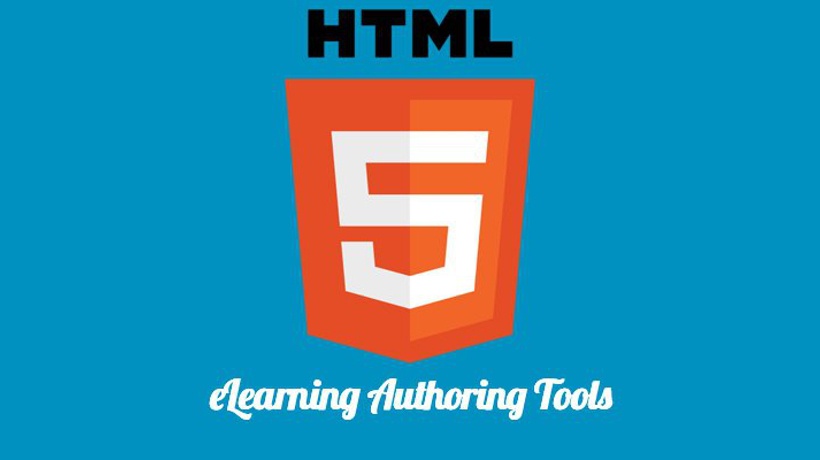HTML5 In eLearning: 6 Benefits eLearning Professionals Should Know
Until quite recently Adobe Flash was one of the most popular authoring tools for eLearning courses, thanks to its high level of interactivity, immersive graphics and engaging animations. However, with fewer smartphones and tablets being able to support Flash these days, HTML5, a mobile-friendly alternative, is becoming the new favorite among eLearning professionals. Here are just a few of the most notable HTML5 benefits that you may want to consider when choosing the eLearning authoring tool for your next eLearning deliverable.
- Reach a wider audience.
The usage of mobile devices shows rapid growth. In fact, the number of people accessing eLearning resources via their smartphones and tablets grows daily, as individuals are now seeing that learning on-the-go offers a wide range of unique advantages. Given that Flash has not been supported by popular mobile devices, such as iPhones and iPads, you will have to meet the demands of your mobile learning audience by creating HTML5 courses that can actually be accessed on these platforms or run the risk of not reaching a wider audience. By using HMTL5 authoring tools you can adapt your eLearning course on all screen sizes and even create smart meta-tags that give you the ability to optimize your eLearning course for mobile devices. - Greater accessibility for learners.
The simple truth is that many learners just don’t have the time to seat down at their laptops or desktops to access eLearning courses. Even though they may want to learn new information and develop their skill sets, life’s obligations prevent them from participating in lengthy eLearning courses or online training events. However, HTML5 gives you the power to create eLearning deliverables that can be accessed anywhere, whenever it’s most convenient for the learner, even offline, as it supports offline storage, which means that your learners can store the data for your app or eLearning course and access it at a later time without even connecting to the internet. - Ease of customization.
One of the most significant advantages of Flash is that eLearning professionals are able to customize the eLearning course, down to the last detail. The interactions are dynamic and immersive; even the graphics can be interactive. HTML5 can also be customized with ease, without having the same accessibility limitations as Flash. eLearning professionals can customize the flow of the eLearning content adapting the viewing panel, which makes it accessible on a variety of different browsers and screen sizes. Better still, you are able to make all of these modifications by simply changing the coding, rather than having to install a plug-in or master the nuances of a third-party program. You can then deploy your online applications and eLearning courses rapidly, thanks to the fact that they automatically work across all browsers, online platforms and operating systems. - Multi-browser support. No plug-in is required.
When your learners want to access an online Flash-based course they need to download a trademarked player or a plug-in before they can even view your eLearning content. On the other hand, HTML5 can immediately be accessed on Microsoft Internet Explorer, Google Chrome, Apple Safari or Mozilla Firefox without having to download a plug-in that enables the web browser to comprehend the code. This offers a variety of other secondary benefits. For example, learners will be more likely to enroll in your eLearning course if they know that they are able to access it across all eLearning platforms. In addition, they can quickly and conveniently log onto the eLearning course and start learning without wasting valuable time downloading a plug-in. This gives them more time to actively participate in the eLearning course. - No restrictions on multimedia integration.
The video that you integrate into your HTML5 course can be accessed on any browser or platform. Older authoring tools considered videos and other multimedia elements as a “black box”, which meant that they would appear as a black box if the user did not have the necessary plug-in or application. However, HTML5 allows for easy multimedia integration by eliminating the need for proprietary players and making video and audio presentations searchable in the browser. As such, you can create dynamic and interactive eLearning courses that feature multimedia presentations, thereby boosting the engagement of your audience and offering them a more comprehensive eLearning experience, regardless of the browser or device they use on a regular basis. - HTML5 in eLearning is the new industry standard.
One of the most convincing arguments for switching to HTML5 is that it is the new industry standard. eLearning professionals all across the globe are already using HTML5 to design their eLearning courses, primarily due to the fact that they want to capitalize on all of the aforementioned benefits. It even reaches beyond the Instructional Design industry. For example, YouTube announced that it will be phasing out Flash and utilizing HTML5, and Google rolled out its “HTML5Rocks” portal that features tutorials and articles that focus on this innovative program.
These are just of the arguments in favor of using HTML5 in eLearning. As more eLearning professionals begin to leave behind Flash and take up HTML5 the many possibilities that this tool can bring to the industry will inevitably become bigger and better.
Now that you’ve learned about the benefits of HTML5 in eLearning, read the article The Ultimate List Of HTML5 eLearning Authoring Tools to discover the top HTML5 authoring tools you have at your disposal.









